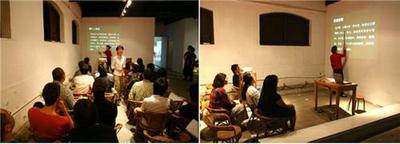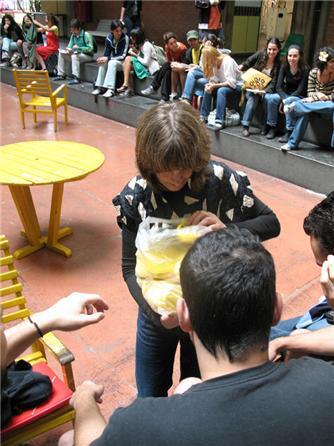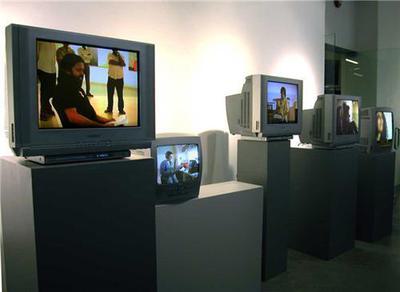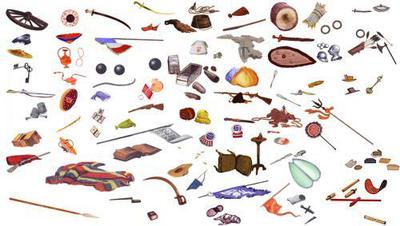Recent selected exhibitions, screenings, performances and writing
* work in collaboration with Patricia Azevedo
2024 Terminalia Festival of Psychogeography, with Deirdre Macleod.
Huddersfield Experimental Short Film Festival, with Geoff Clout.
The 3rd Festival of the Smallest, 222lodge, Dordrecht, Netherlands, with Deirdre Macleod.
2023 SWITCH 2023/ PLAY, Nenagh, Ireland *
DRESS, Art in Odd Places, 14th Street, New York, with Farah Naz Moon
Work within Michelle Williams Gamaker’s exhibition, ‘Our mountains are painted on glass’ South London Gallery and Dundee Contemporary Arts, UK
WOFF23 Film Festival, Depot, Lewis, UK. Audience choice award.
Democracy, Overture Galleries, Madison USA*
Ever Given Neil Kuthi performance with Farah Naz Moon, The Tetley, Leeds UK and Studio Mahbub, Dhaka, Bangladesh
2022 Graphics. LCB Depot, Leicester
On Performance, Short Circuit Films, Brighton
CuratorSpace Artists Bursary
Temple Newsam collection, Leeds
Engaging the Globe* ed. Peter Sramek, pub. OCAD University, Canada
2021 CHANGE! *8prichal, Nikolaev, Ukraine with Lulia Togara
Historic Houses, UK. First prize winner
TYPO Mail Art Muzeum Pismiennictwa i Drukarstwa, Grebocin, Poland
Birkenhead International Film Festival, Birkenhead*
Interplay Leeds, commission with performance poet Lulia Togara
Nieuwstraat Festival, Dordrecht, The Netherlands
Winter Sculpture Park, Gallery No.32, London
2020 Assembly House, Leeds. Commission with performance poet Lulia Togara
False Memory, Rugby Art Gallery and Museum*
Royal Overseas League. Collaboration with poet Joey Chin
Festival of the smallest, 222Lodge, Dordrecht, Netherlands
Film Free and Easy, Primary, Nottingham
2019 BF Artists Film Festival, The Lab F, London
Film Free and Easy, Primary, Nottingham*
Summer Lodge Residency, Nottingham Trent University
Tunnel Vision 2, public spaces, Nottingham
Artists Moving Image Screening Weekend, Pavilion, Leeds. Curated by Herb Shellenberger*
Public Intimacy, B#Side Gallery, Treviso, Italy.
Screening Performance, Performing Screens CUNY New York, USA. With Lena Heubusch
InDialogue (conference presentation) Nottingham Contemporary, UK*
2018 Film Free and Easy, Primary, Nottingham *
Artists Moving Image Festival, Tramway, Glasgow, UK
Space21 Independent Program. Erbil, Sulaimani and Dohuk, Kurdistan-Iraq. Performance
Birth Rites Collection exhibition/screening, Whitworth Art Gallery, Manchester and Kings College, London, UK
Encountering difference. Performance/demonstration with Lena Heubusch, Chelsea College of Arts, London
Inner Nature III Against the Tide. * Screenings;
Madraza Palace Contemporary Cultural Centre, University of Granada, Spain
Video Space, Hospital Real, Granada, Spain
Video Art and Ecology. Temple University, Philadelphia, USA
Out of line Contracorriente, Centro de Arte Mandarina Bords, Palmera, Spain
s-Hertogenbosch, The Netherlands
Faculty of Social and Human Sciences, University of Zaragoza, Spain
Art.Earth, Dartington Hall, Totnes, Devon, UK
Library Interventions, Leeds Arts University. In collaboration with Geoff Clout. Video and performance commission with Michelle Williams Gamaker
From Dust till Dust, B#Side Gallery, Treviso, Italy.
Wrexham Open, Ty Pawb, Wrexham, Wales. *
In-sonora10, Muestra de Arte Sonor, various venues, Madrid, Spain. *
FF2WP The Finnish Museum of Photography, Helsinki*
2017 Difference goes speed dating. Curated by Ope Lori. Chelsea College of Arts, London
Framing The Crisis, System Gallery, Newcastle, UK. A Vault Collective project. *
CineAutopsia / Bogotá Experimental Film Festival, Colombia. *
Inner nature III. Against the tide. Institut Valencià d’Art Modern, Spain. *
Inner nature III. Las Tablas de Damiel, Sala de Audiovisuals, Cuidad Real, Spain. *
Artists Boarderpanic Compendium. Visual essay of performance script. Edited by Curious.
Fast Forward 2 Dillon and Lee Gallery, New York*
Kaapelitehdas, Tallberginkatu 1 G, 00180 Helsinki*
FF2WP The Finnish Museum of Photography, Helsinki
Make8elieve. Photo essay in publication. *
Stuff of Epic, B#Side Gallery, Treviso, Italy.
STEP travel award from European Cultural Foundation
2016 Paravideo, Paratissima, Torino Esposizioni Turin, Italy. *
Bankley Open, Bankley Studios, Manchester, UK (prizewinner). *
Making Tracks, Whirlygig Cinema, London Dance Film Festival, Rose Theatre, Kingston on Thames, UK. *
Doubles Series + Mintier. blip blip blip at East Street Arts, Leeds, UK with Lucy Clout
Chroma, Safehouse 1, London, UK. *
Ten Ends, Live Art Bistro, Leeds, UK.
No Quiet Place, The Tetley Leeds, UK.
Sunscreen, New Art Exchange Nottingham, UK.
Sheffield Fringe: Object Documentary. Bloc Projects, Sheffield, UK. *
Cinema apensar da imagem. Ed Gabriel Mendotti. Book chapter. *
2015 Spring Lamb, Yorkshire Sculpture Park, UK
Re-name, British Heart Foundation Shop, Doncaster, UK
Sunscreen, Venice Biennale Bilateral Event, Italy
Sunscreen One Thoresby Street, Nottingham, UK
Domestic II, Word of Warning, Manchester, UK
Sunscreen Instagram takeover commission
2014 Seen Created, The Terry O’Toole Theatre, Lincoln, UK
Video screenings. Beacon Art Project, UK
Decision / Decyzja. Leeds Metropolitan University, UK
Chinese Pole 2. Action for inTRANSIT, Hyde Park and Kensington Gardens, London, UK
2013 torinoPERFORMANCEART, Turin, Italy. *
ACAdovetail, Newcastle upon Tyne, UK. *
Archetype Drift, Johalla Projects Gallery, Chicago, USA. *
Face-to-Face. project Leeds Market, UK, with makeup artist Abby Graves
Copy at the Table. 20-21 Visual Arts Centre, Scunthorpe, UK
In-Teatro festival, Polverigi., Italy
2012 Globalization-Connections-Time, Kunsthalle Hannover, Germany.
PNEM Sound Art Festival, Netherlands. *
Hazard Live Art, Manchester, UK.
Morley Literature Festival, UK.
Hoopla! Sugarhouse Studios, London, UK.
2011 Magaio Voicescapes, Binaural, Nodar, Portugal
Platforma Rochelle School, Club Row Gallery, London, UK
Coastal Currents, Hastings and St Leonards, UK
2010 We Trust Strangers, Umbrella Gallery Leeds, UK
Giessen Video Festival, Germany
Bed-in at The Bluecoat, Bluecoat Gallery, Liverpool, UK
The 23rd Festival Les Instants Vidéo, Marseilles, France
Overlap, The Drawing Shed, PSL Leeds, UK
Hazard Live Art Festival, Manchester, UK
Preparing the Ground, ACAdovetail Gallery, Newcastle on Tyne, UK
Crunchtime2010, York, UK
Exchange Mechanism, Belfast Exposed, Belfast, UK
2009 Post War, Sulaymaniyah, Kiurdustan/Iraq
Town and Country Events, PSL Leeds, UK
Here we are, Brumadinho, Brazil
Here we are, Allenheads, Northumberland, UK
2008 The Northern Art Prize Exhibition, Leeds Art Gallery (finalist)
The Language Lesson (100 teachers and 1 pupil) UFMG, Belo Horizonte, Brazil
Humbermouth Literature Festival. UK. Special Commission.
New Appointments, Leeds Metropolitan University Gallery, UK
2007 Performance with Adalet Garminary, Arbil University, Kurdistan/Iraq
Hobusepea Gallerii. Tallinn Estonia. with Katrin Kivimaa
Horticulture. Leeds Metropolitan Gallery, UK
‘Sobre Macao’ Performance with Wen Yau, DoDao Festival, Macao.
Coastal Currents, Hastings, UK
Le French Mai Festival.’Our Voices’ curated by Loic Serot, Hong Kong
The Bengal Gallery, Dhaka, Bangladesh. Performance with Ronni Ahmmed
2006 The Living Art Museum, Reykjavik, Iceland. Performance with Bryndis Raqgnarsdóttir
Casino Luxembourg Forum d'Art Contemporain. Performance with Tanja Frank
2005 Transborder Language, 2nd Dashanzui International art Festival, Beijing China. Performance with Shu Yang
Performance Art Platform, Tel Aviv, Israel. Performance with Anat Pick
National Eisteddfod, Caernarfon, UK . Performance with Mererid Hopwood
Perspective Antarctique, Galerie ÉOF, Paris, France. Performance with Françoise Vincent











